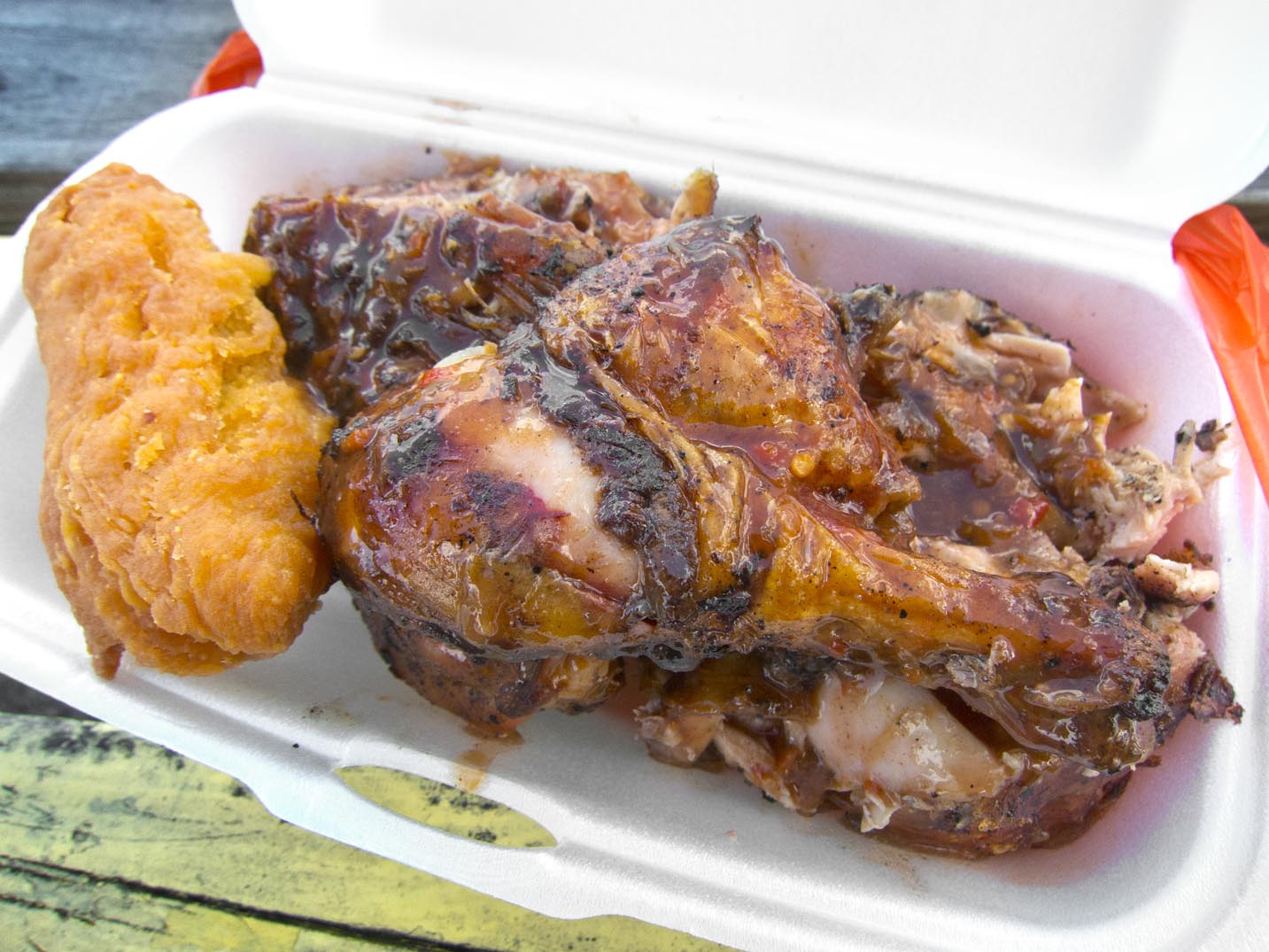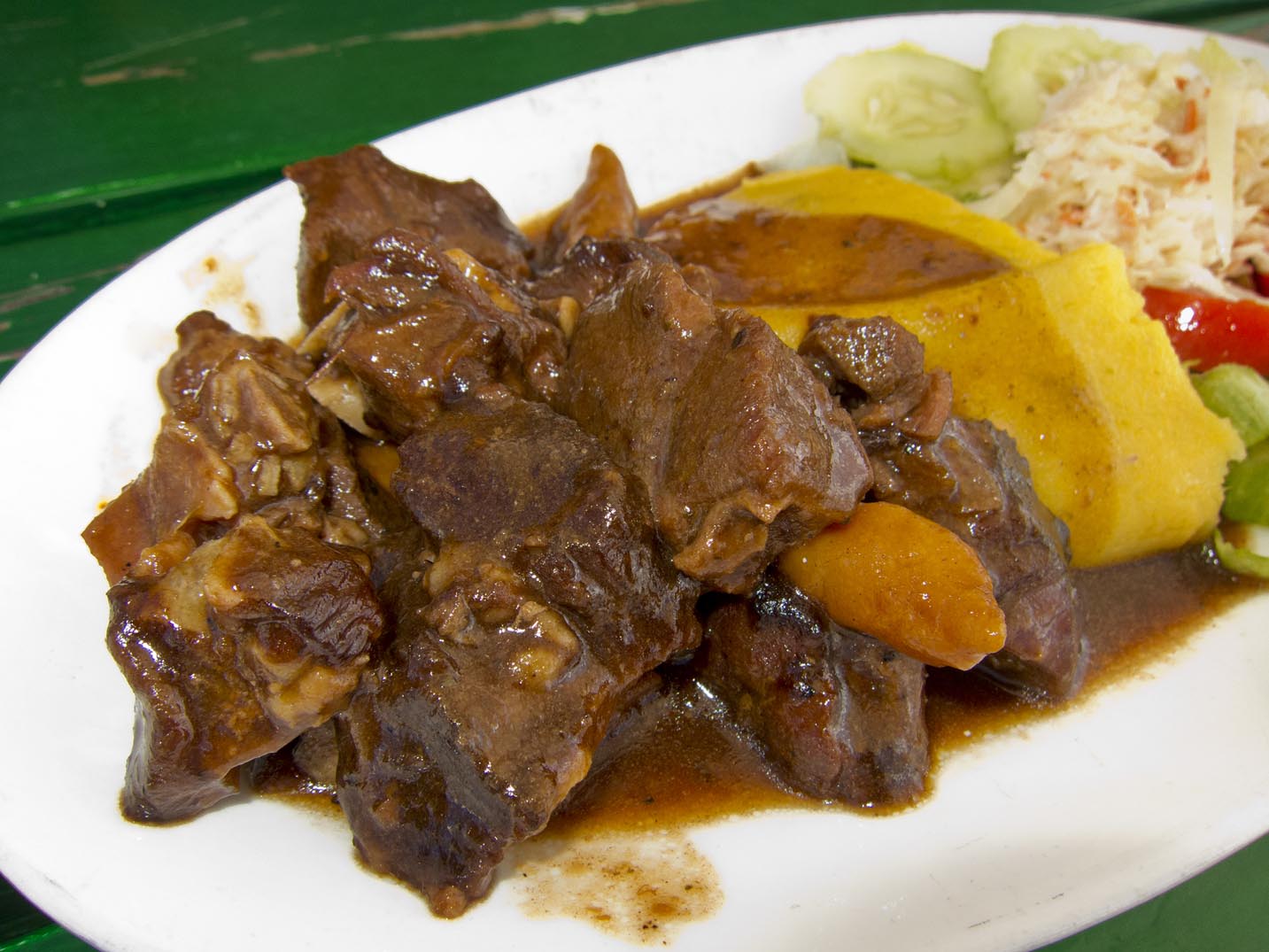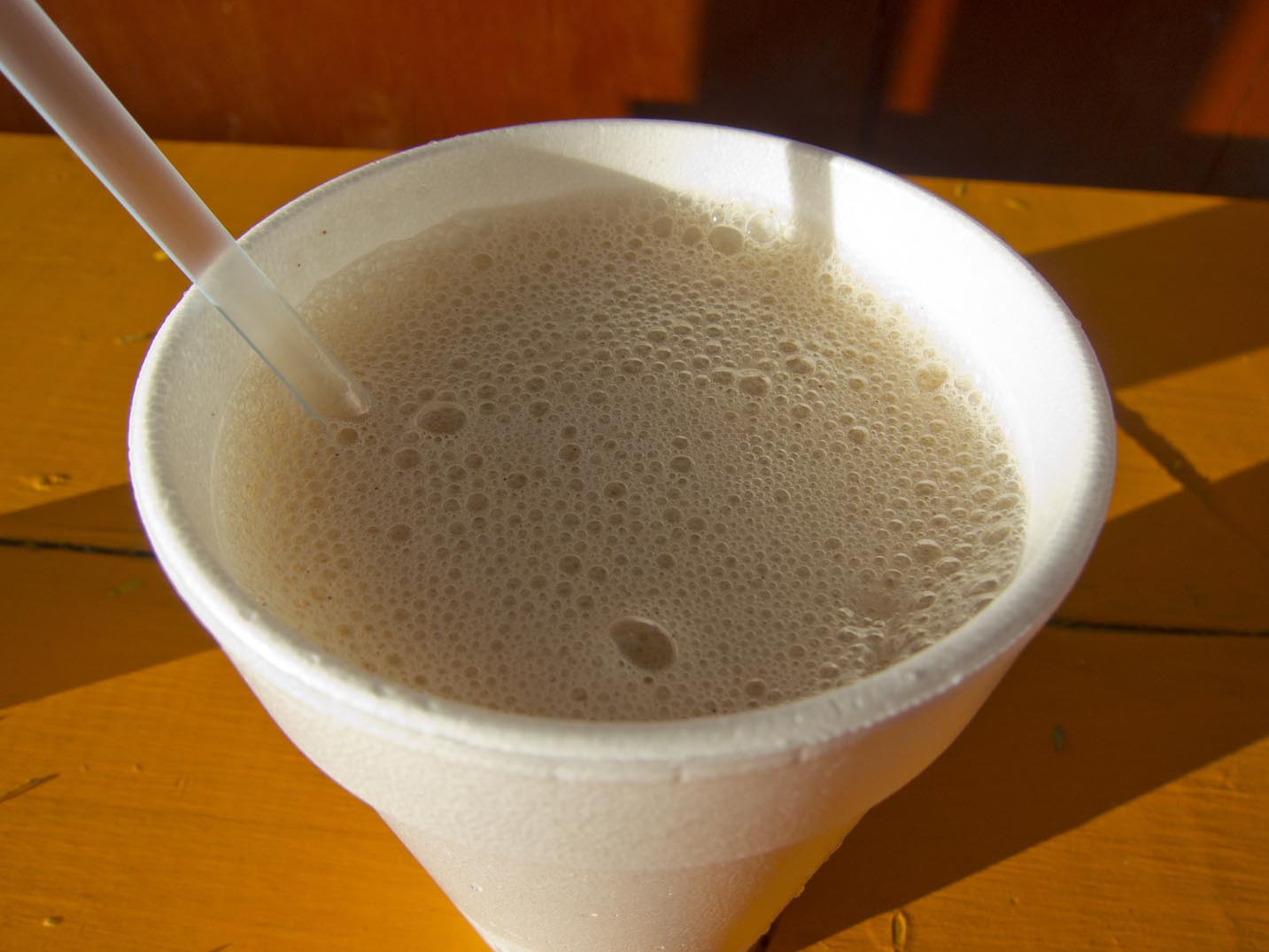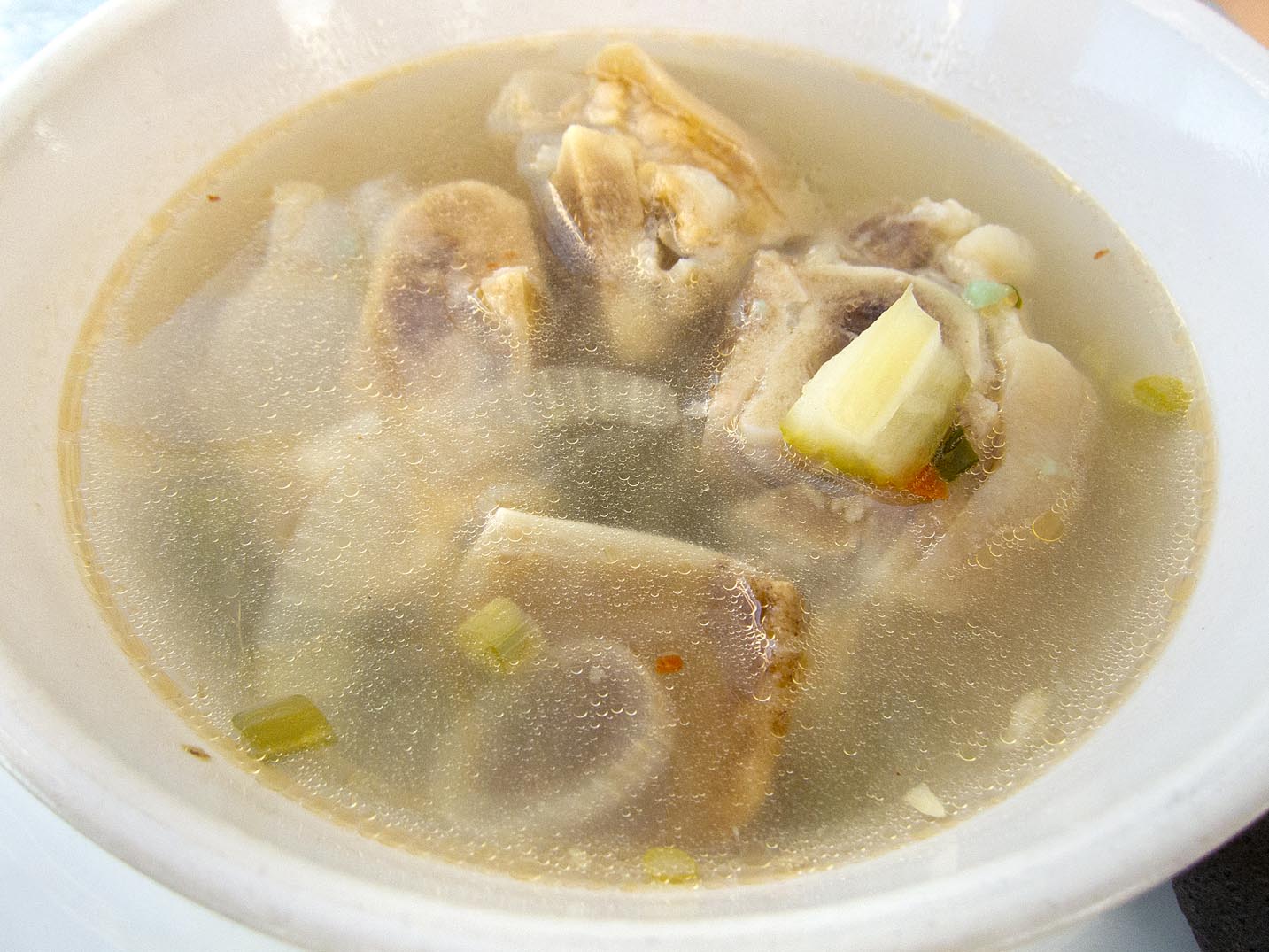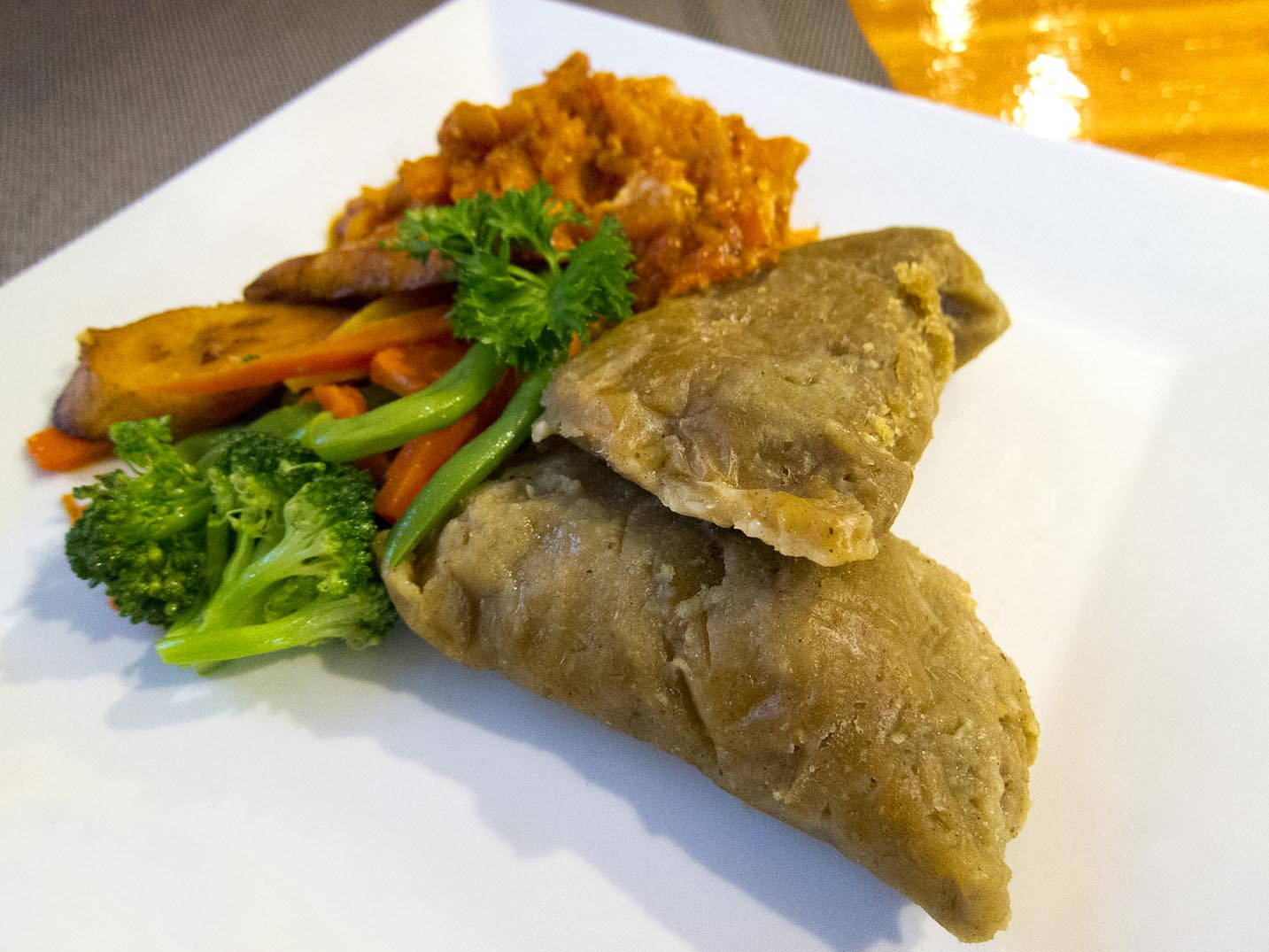What: The Antiguan breakfast always involves salt fish—salt-cured, dried white fish (often ling fish, in the cod family and imported from Trinidad or Guyana) flaked into pieces and sautéed with onions and peppers—as well as avocado, hard-boiled egg, plantain, a basic salad, and chop-up, a soft vegetal mash of okra, pumpkin, eggplant, and spinach. Sometimes you’ll also get fungee, a mild polenta-like cornmeal dish that pairs well with the strong-flavored salt fish. And on the side, Johnny cakes, a subtly sweet fried bread that stands in for pancakes (or doughnuts, perhaps). Taken together this breakfast is a beautiful, belly-filling, sweet and salty medley at the intersection of land and sea. It’s traditionally eaten at home on weekends, especially post-church on Sundays; as a tourist, you’ll likely find it offered only on weekends at restaurants or hotels.
Good to know: Fungee (also spelled fungi; pronounced “foon-jee”) is likely of African origin. To us, it was reminiscent of West Africa’s foofoo and Sierra Leone’s agidi, though we’re not sure of any direct lineage. On Antigua, fungee is the standard accompaniment to what’s considered the national dish, pepperpot, a meat-and-veggie stew.
Where: We found our traditional breakfast at Miller’s By the Sea (268-462-9414; Fort James), a plastic-tabled waterfront affair just north of St. John’s on the island’s northwest coast.
When: Daily, 8am-10pm; come on Saturday after 8:30am for this breakfast
Order: The “local breakfast” (25 EC) here includes salt fish (ling fish sautéed with green pepper, celery, and sliced onion), chop-up, fungee, egg, avocado, and a small salad of tomato, cucumber, and lettuce. Johnny cakes are served on the side. It was an absolutely delicious start to a day of island exploration.
Alternatively: Nearby, Tony’s (268-462-6326, Dickenson Bay, map), a beach bar and cafe popular among cruise-ship day-trippers from St. John’s, offers traditional breakfast items on Sundays only. If you’re at a resort, it’s worth asking for this meal.


